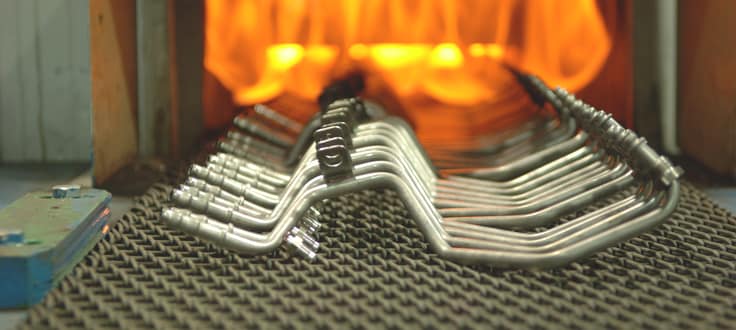Equipment Safety
It is important to pay attention to gas system as leaks may develop in any part of a gas system, particularly at joints. Gas equipment and manifolds helps you store gas correctly, regulate its flow rate and pressure, and prevent major accidents due to gas leakage. We have a comprehensive range of gas equipment available in the market, such as manifolds, regulators, valves that meet all safety standards.
NEVER USE A FLAME WHEN TESTING FOR LEAKS.
It is important that all equipment that is part of a gas system is checked for leaks after assembly and corrective action taken before use.
Always use leak detector solutions when looking for gas leakage. Our leak detection spray TL-4 is perfect for industrial systems. Don’t use soapy water or washing up liquid. Ensure the leak detect solution is compatible with the materials used in the equipment construction. The leak test solution should be applied to ALL joints.
- ● Apply the leak detect solution to joints and any potential leakage points, such as at the point of connection of the cylinder valve with the regulator.
- ● You should never apply leak test solution into a cylinder valve outlet.
- ● If there is any frothing, the system should be immediately depressurised and the leak corrected.
- ● Do not use the equipment until the leak has been rectified.
- ● Ensure the area is dry by wiping with a clean lint free cloth after the check has been completed.
- ● Once the leak has been rectified, re-purge air from the system prior to use.
Regularly check for faults and leaks
- ● Hoses with leaks, cuts, burns or local surface damage should be replaced with new industry approved fitted hose.
- ● Examine the cutting or welding nozzle regularly. If it is becoming clogged replace with new or clean it.
Keep equipment clean. In particular oxygen regulators must be kept in a clean area when not in use. If a pressure regulator is defective: replace it immediately.
Leaks around the cylinder valve spindle
Leakage around the spindle of the cylinder valve will be revealed by hissing and in the case of fuel gases, by a smell. Do not use the cylinder and do not attempt to repair the leak. Move the cylinder to an area where the leak can disperse safely, label it and advise us.OBS! If your manometer is broken, you can a new one from us as spare part.
When a pressure regulator is fitted with pressure gauges, these should never be removed, exchanged or tampered with. If a gauge leaks, take the whole pressure regulator to your supplier and ask his advice.
Advice on Gas Equipment
Make sure you use correct hoses and work wear.
Hoses
Use only hoses that meet the European standards and are of the best quality such as those supplied by AGA. Inferior hoses harden and may later crack or leak or catch fire internally when subject to oxygen. Never use water hose.
Ensure that hoses are of the right length and not longer than necessary! Still it must be long enough to allow the cylinders to be safely positioned from flying sparks and hot metal. Do not coil surplus hose around the cylinder or regulator or on the floor close to cylinders. A fire in a coiled hose is very difficult to extinguish. Surplus hose is preferably positioned behind you to keep it clear of sparks. Hoses should not be positioned underneath the cutting/welding area.
The right connection
- ● Bad hose connection is a frequent cause of accidents. AGA fitted hoses are supplied with the ends firmly attached to nipples, with loose nuts for connection to regulator outlets and blowpipe inlets. We have also the traditional ones with hose clamps.
- ● Never use old or second-hand clips for hose connections. Twisted wire can cause serious injury if the hose works loose and flails about. Check connections regularly. Remember to purge hoses before lighting a cutting or welding torch.
Hose check valve and flashback arrestors
When using oxy-fuel gas equipment, flashbacks can and do occur due to recommended pressures and procedures not being observed, nozzle blockage, faulty equipment, or leaking equipment. One of the main causes of flashback is back feeding which occurs when higher pressure gas feeds back up a lower pressure stream.
The presence of a hose check valve will prevent oxygen and fuel gas mixing in the hose and subsequently causing fire, injury and damage.
A flashback arrestor is designed to quench the flashback and, when it incorporates a cut-off valve, will automatically shut off the gas flow. These multifunction devices afford an additional safeguard, particularly in locations where a fire following a flashback would be especially dangerous, e.g. hospitals, garages, and workplaces with flammable or hazardous chemicals. Any equipment used for oxygen must be known to be approved for such use. Flashback arrestors should be fitted to all fuel gas supply lines and to oxygen supply lines when they are used in conjunction with fuel gases.
National regulations differ when we talk about oxygen and flashbackarrestors. We recommend flashback arrestors with 4 safety features including the pressure sensitive shut – off valve which need to be opened manually before the gas can flow .
Use correct work wear and personal protective equipment
When welding or cutting use goggles with double lenses (carrying the CE mark). The inner lens should be tinted and the outer lens clear. The clear outer lenses should be changed regularly when spatter builds up. It is also advisable to wear eye protection (spectacles or goggles carrying the CE mark) when handling high pressure gases to protect the eyes against flying dust particles or the impact of the gas stream.
Do not wear clothes made of highly flammable materials. Leather gloves or gauntlets should be used when necessary, and in awkward work locations additional protective clothing may be required.


